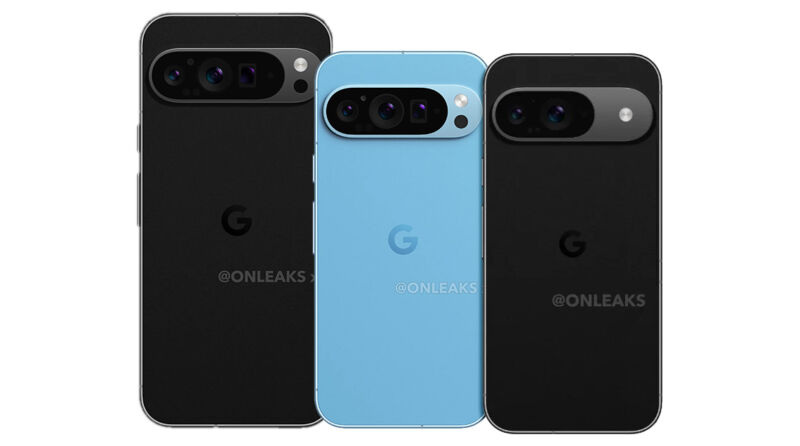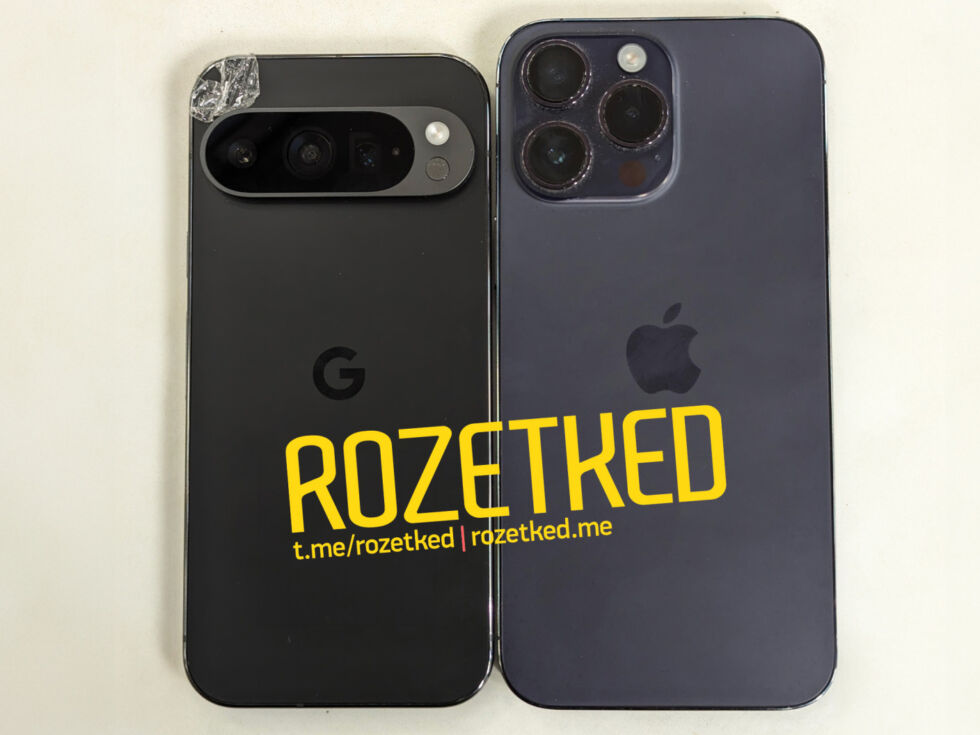
OnLeaks / 91Mobiles / MySmartPrice
The usual timeline would put the Google Pixel 9 at something like five months away from launching, but that doesn’t mean it’s too early to leak! Real-life pictures of the “Pixel 9 Pro” model have landed over at Rozetked.
This prototype looks just like the renders from OnLeaks that first came out back in January. The biggest change is a new pill-shaped camera bump instead of the edge-to-edge design of old models. It looks rather stylish in real-life photos, with the rounded corners of the pill and camera glass matching the body shape. The matte back looks like it still uses the excellent “soft-touch glass” material from last year. The front and back of the phone are totally flat, with a metal band around the side. The top edge still has a signal window cut out of it, which is usually for mmWave. The Pixel 8 Pro’s near-useless temperature sensor appears to still be on the back of this prototype. At least, the spot for the temperature sensor—the silver disk right below the LED camera flash—looks identical to the Pixel 8 Pro. As a prototype any of this could change before the final release, but this is what it looks like right now.
The phone was helpfully photographed next to an iPhone 14 Pro Max, and you might notice that the Pixel 9 Pro looks a little small! That’s because this is one of the small models, with only a 6.1-inch display. Previously for Pixels, “Pro” meant “the big model,” but this year Google is supposedly shipping three models, adding in a top-tier small phone. There’s the usual big Pixel 9, with a 6.7-inch display, which will reportedly be called the “Pixel 9 Pro XL.” The new model is the “Pixel 9 Pro”—no XL—which is a small model but still with all the “Pro” trimmings, like three rear cameras. There’s also the Pixel 9 base model, which is the usual smaller phone (6.03-inch) with cut-down specs like only two rear cameras.

Rozetked says (through translation) that the phone is “similar in size to the iPhone 15 Pro.” It runs a Tensor G4 SoC, of course, and—here’s a noteworthy spec—has a whopping 16GB of RAM according to the bootloader screen. The Pixel 8 Pro tops out at 12GB.
Anything could change between prototype and product, especially for RAM, which is usually scaled up and down in various phone tiers. A jump in RAM is something we were expecting though. As part of Google’s new AI-focused era, it wants generative AI models turned on 24/7 for some use cases. Google said as much in a recent in-house podcast, pointing to some features like a new version of Smart Reply built right into the keyboard, which “requires the models to be RAM-resident”—in other words, loaded all the time. Google’s desire to keep generative AI models in memory means less RAM for your operating system to actually do operating system things, and one solution to that is to just add more RAM. So how much RAM is enough? At one point Google said the smaller Pixel 8’s 8GB of RAM was too much of a “hardware limitation” for this approach. Google PR also recently told us the company still hasn’t enabled generative AI smart reply on Pixel 8 Pro by default with its 12GB of RAM, so expect these RAM numbers to start shooting up.
The downside is that more RAM means a more expensive phone, but this is the path Google is going down. There’s also the issue of whether or not you view generative AI as something that is so incredibly useful you need it built into your keyboard 24/7. Google wants its hardware to be “the intersection of hardware, software, and AI,” so keeping all this ChatGPT-like stuff quarantined to a single app apparently won’t be an option.
One final note: It’s weird how normal this phone looks. Usually, Pixel prototypes have a unique logo that isn’t the Google “G,” and often they are covered in identifying patterns for leak tracing. This looks like a production-worthy design, though.
